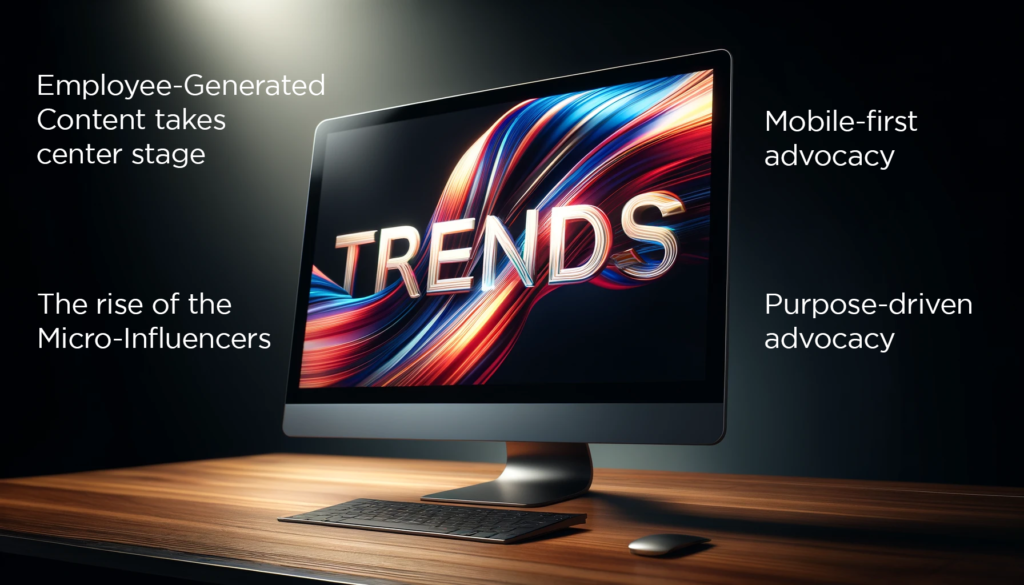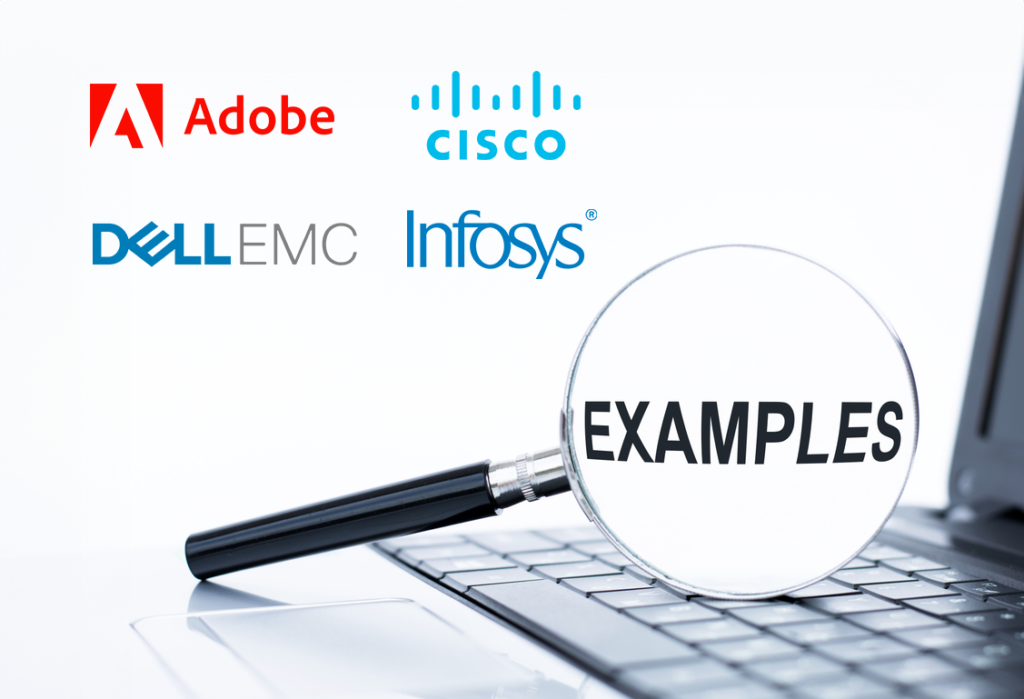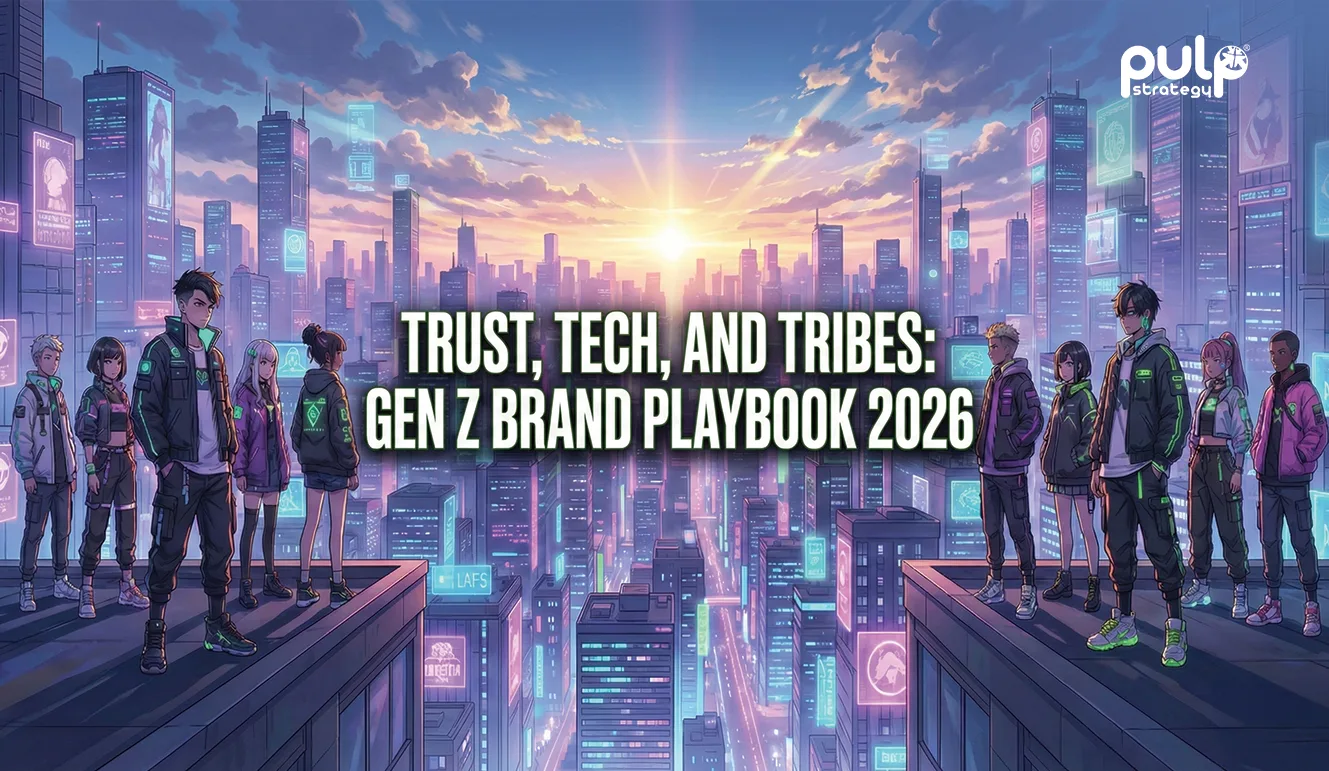We understand the constant struggle to cut through the noise and reach the ever-elusive decision-maker. Traditional marketing tactics are becoming increasingly saturated, and brands are looking for new ways to build trust and credibility. Enter the often-overlooked hero: Employee advocacy. We believe that employees are a brand's most authentic voice. In 2024, empowering them to become brand advocates is no longer a "nice-to-have," it's a strategic imperative. Let's delve into why employee advocacy is crucial for B2B success in the APAC region:
Employee Advocacy: A Win-Win Proposition

Employee advocacy goes beyond encouraging employees to share company posts. It's about fostering a culture of brand ambassadorship where employees feel empowered to share their unique insights, experiences, and perspectives related to your brand and industry. This authentic content resonates more deeply with audiences who are increasingly wary of traditional marketing messages.
Employee Advocacy trends shaping the APAC Landscape

The marketing region is experiencing a dynamic shift in B2B marketing strategies. We've identified several key trends that are shaping the landscape of employee advocacy:
- The rise of the Micro-Influencers: Employees, with their smaller but highly engaged professional networks, are emerging as powerful brand ambassadors. Their insights hold greater weight and resonate more deeply with target audiences in the region.
- Employee-Generated Content (EGC) takes center stage: Empowering employees to create authentic, shareable content about their experiences and industry knowledge is key. Think blog posts, social media snippets, or video testimonials, as they foster trust and credibility, establishing your employees as thought leaders within the community.
- Purpose-driven advocacy: The workforce, dominated by Millennials and Gen Z, prioritizes working for companies with a strong social purpose. Integrating your employee advocacy program with your Corporate Social Responsibility (CSR) initiatives creates a powerful synergy. Employees become passionate advocates when they can connect their brand with a cause they believe in, enhancing their brand reputation.
- Mobile-first advocacy: With APAC boasting some of the highest mobile penetration rates globally, a mobile-friendly approach to employee advocacy is essential. Developing user-friendly platforms and tools accessible on smartphones becomes crucial to encouraging participation and content sharing on the go.
The Latest Buzz: Empowering Employees for Social Media Advocacy

Equipping your employees for social media engagement is crucial for a successful advocacy program. Here's how:
- Building confidence via training & resources
- Go beyond the basics: Offer targeted sessions on industry-specific platforms your employees frequent. Teach them how to tailor content for each platform, maximizing reach and engagement.
- Brand messaging masterclass: Deepen employee understanding of your brand voice and messaging. Equip them with the skills to seamlessly integrate brand messaging into their personal social media personas.
- Content creation powerhouse: Provide resources and workshops on crafting compelling social media content, including bite-sized video tutorials, social media copywriting workshops, or even impactful graphic designs.
- User-friendly advocacy platforms:
- Frictionless sharing: Implement user-friendly platforms that allow employees to discover, curate, and share pre-approved content with a single click.
- Analytics & insights: Empower employees to understand the impact of their advocacy efforts. Integrate analytics dashboards that showcase reach, engagement, and content performance.
- Recognition & Rewards: Fueling a culture of advocacy
- Shine a spotlight: Publicly acknowledge and appreciate employee contributions in company newsletters, internal social platforms, or even town hall meetings.
- Reward & recognition programs: Implement programs that incentivize participation. This could include gamification elements with points, badges, or leaderboards for top performers.
- Career advancement opportunities: Highlight employee advocacy efforts during performance reviews and connect active participation with potential career development opportunities.
Deep Dive: Challenges in Employee Advocacy and crafting solutions

Employee advocacy holds immense promise, but overcoming these key hurdles is crucial to realizing its full potential. Let's delve deeper into the challenges you mentioned and explore effective solutions:
Challenge 1: Cracking the code on low employee buy-in: Here's why employees might be hesitant to participate:
- Privacy concerns: Employees might worry about sharing work-related information or overstepping personal boundaries.
- Social media-friendly: Not everyone feels comfortable navigating social media platforms.
- Unclear program benefits: Employees need to understand the "why" behind advocacy – how it benefits them and the company.
Solutions to spark employee advocacy:
- Transparency & communication: Clearly explain the program's goals and benefits for both employees (increased visibility, career development) and the company (enhanced brand reputation, lead generation).
- Addressing privacy: Develop clear guidelines outlining what content is appropriate and assure employees of data privacy protocols.
- Building confidence: Offer training workshops on social media best practices and content creation to equip employees with the skills they need to succeed.
Challenge 2: Maintaining content consistency & quality: The struggle to ensure a steady stream of high-quality content can stem from:
- Limited resources: The marketing team might not have the bandwidth to create a constant flow of fresh content.
- Content quality: Employees might be unsure what content is most relevant and engaging for the target audience.
- Brand alignment: Maintaining consistency with brand messaging across a diverse group of employee voices can be challenging.
Solutions for consistent, high-impact content:
- Curated content library: Create a centralized repository of pre-approved, high-quality content aligned with employee expertise and company messaging. This could include blog posts, industry news, infographics, or customer success stories.
- Content creation guidelines: Develop clear guidelines on content topics, style, and brand voice to ensure consistency across employee posts.
- User-friendly tools: Utilize user-friendly social media sharing platforms that allow employees to easily curate and share pre-approved content.
Challenge 3: Measuring the ROI maze: Quantifying the true impact of employee advocacy can be tricky due to factors like:
- Multi-touch attribution: The customer journey often involves multiple touchpoints, making it difficult to isolate the influence of employee advocacy.
- Indirect impact: Employee advocacy often builds brand awareness and trust, which are crucial but harder to measure directly.
Solutions to navigate the ROI maze:
- Set SMART goals: Define specific, measurable, achievable, relevant, and time-bound goals for your employee advocacy program. This could include increased website traffic, lead generation, or brand mentions.
- Leverage advocacy analytics: Utilize employee advocacy program analytics tools to track key metrics like reach, engagement, website traffic, and lead generation influenced by employee-shared content.
- Correlate Data: Look for correlations between employee advocacy activities and positive business outcomes, such as increased website traffic coinciding with employee content sharing spikes.
Real-world examples of Employee Advocacy Success

Here are some inspiring examples of B2B companies that are winning with employee advocacy:
- Adobe Systems: Empowered employees to share success stories and industry insights on LinkedIn, leading to a significant increase in brand awareness and lead generation.
- Infosys: Launched an "Infy Influencer" program, transforming employees into social media brand ambassadors who share company thought leadership and industry expertise.
- Cisco: Empowered employees to share content aligned with their areas of expertise, resulting in a 700% increase in website traffic from employee advocacy efforts.
- Dell EMC: Focused on building an authentic advocacy program, leading to a 2X increase in qualified leads.
The takeaway
Employee advocacy is not a compulsion but a strategic approach to B2B marketing that builds trust, strengthens brand reputation, and drives business growth. By empowering your employees to become brand advocates, you're unlocking a powerful marketing force that resonates with today's APAC audience. Get ready to unleash the potential of your workforce and craft a winning employee advocacy program for your B2B brand.








